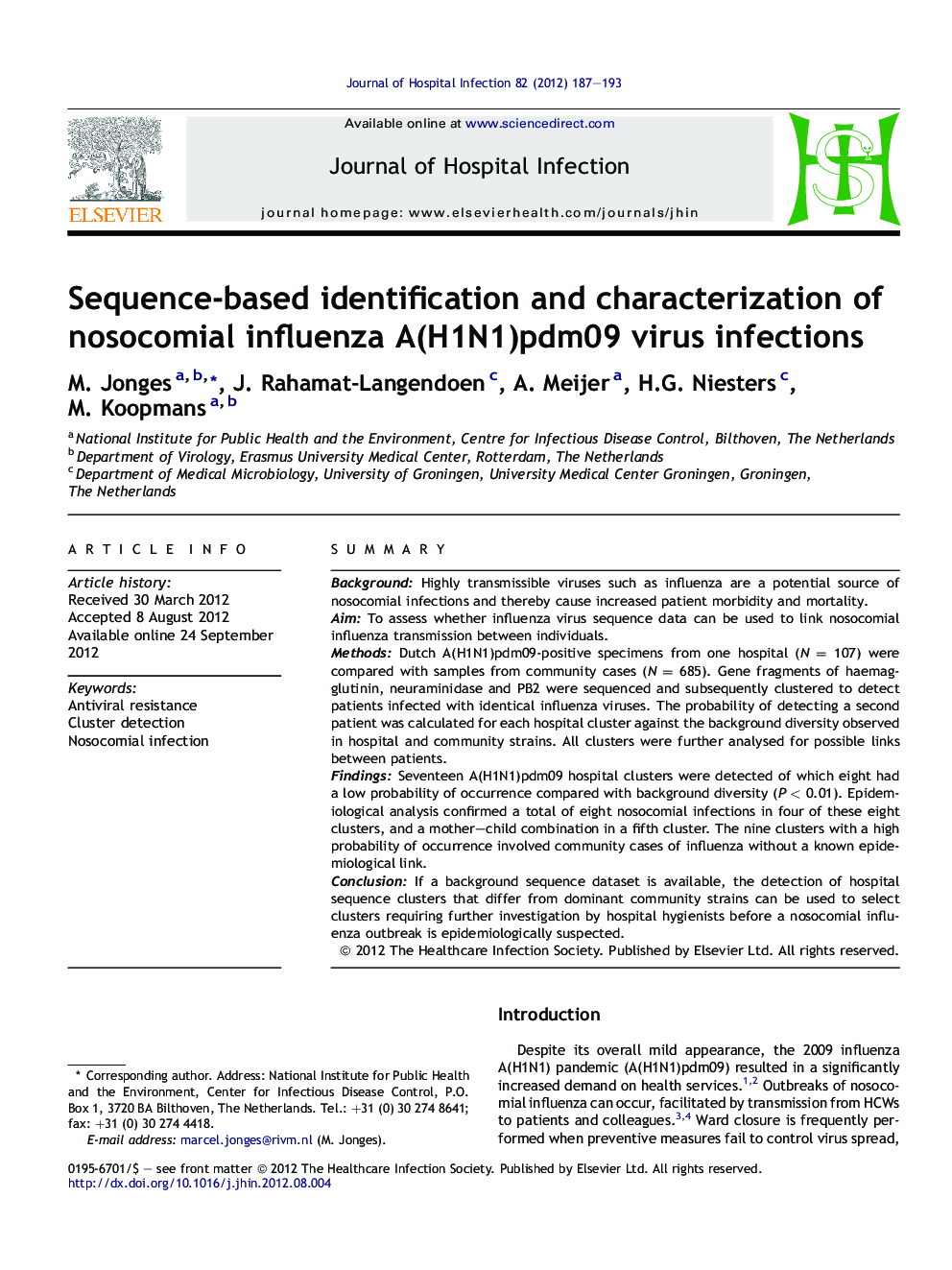| Article ID | Journal | Published Year | Pages | File Type |
|---|---|---|---|---|
| 3371847 | Journal of Hospital Infection | 2012 | 7 Pages |
SummaryBackgroundHighly transmissible viruses such as influenza are a potential source of nosocomial infections and thereby cause increased patient morbidity and mortality.AimTo assess whether influenza virus sequence data can be used to link nosocomial influenza transmission between individuals.MethodsDutch A(H1N1)pdm09-positive specimens from one hospital (N = 107) were compared with samples from community cases (N = 685). Gene fragments of haemagglutinin, neuraminidase and PB2 were sequenced and subsequently clustered to detect patients infected with identical influenza viruses. The probability of detecting a second patient was calculated for each hospital cluster against the background diversity observed in hospital and community strains. All clusters were further analysed for possible links between patients.FindingsSeventeen A(H1N1)pdm09 hospital clusters were detected of which eight had a low probability of occurrence compared with background diversity (P < 0.01). Epidemiological analysis confirmed a total of eight nosocomial infections in four of these eight clusters, and a mother–child combination in a fifth cluster. The nine clusters with a high probability of occurrence involved community cases of influenza without a known epidemiological link.ConclusionIf a background sequence dataset is available, the detection of hospital sequence clusters that differ from dominant community strains can be used to select clusters requiring further investigation by hospital hygienists before a nosocomial influenza outbreak is epidemiologically suspected.
